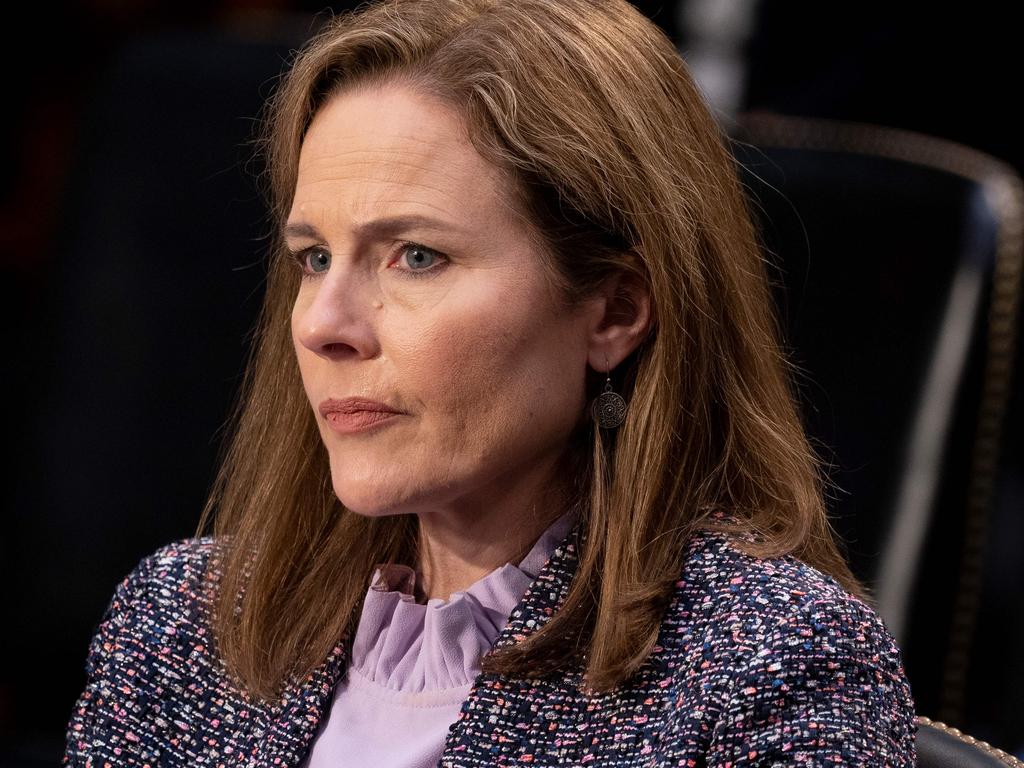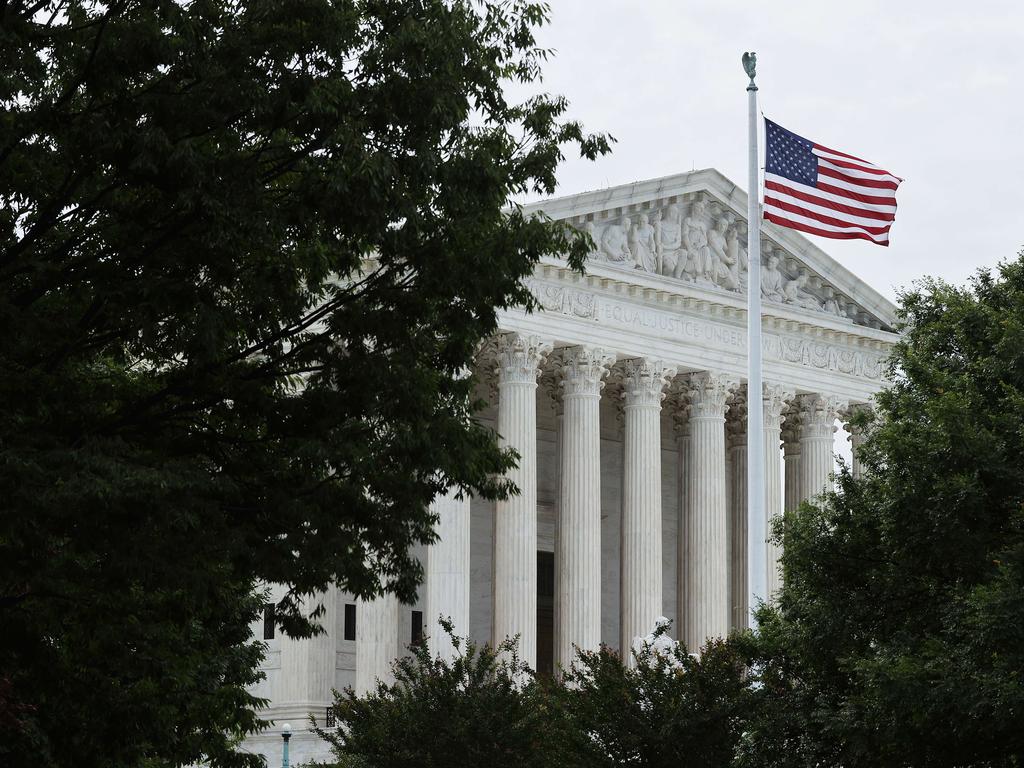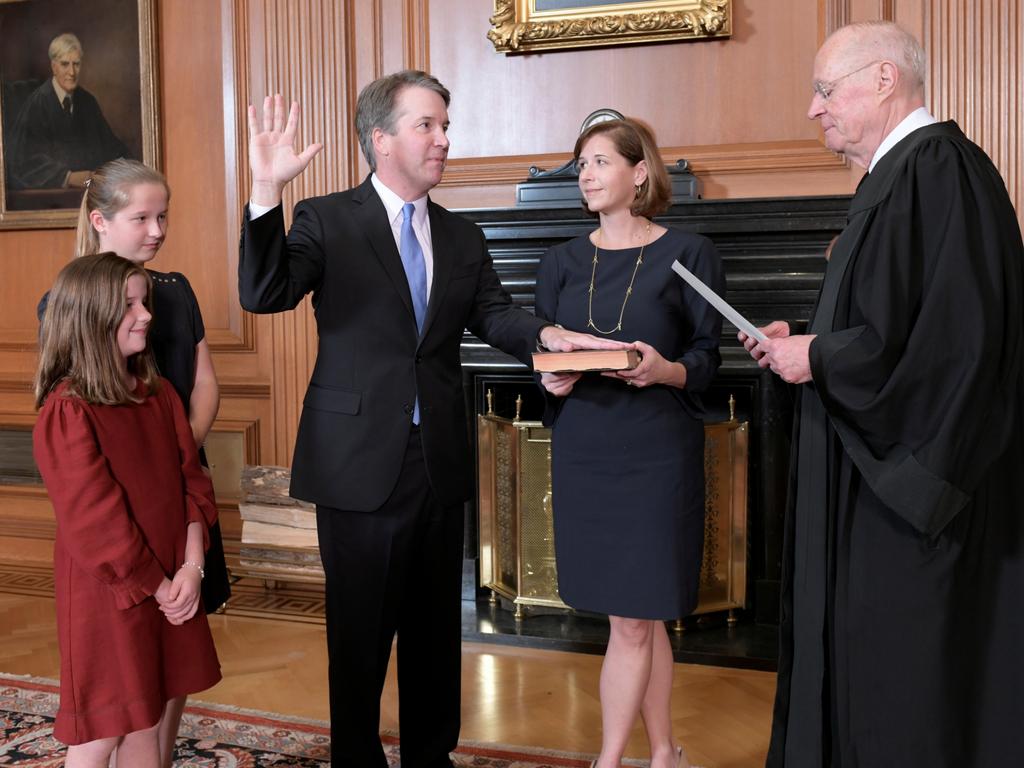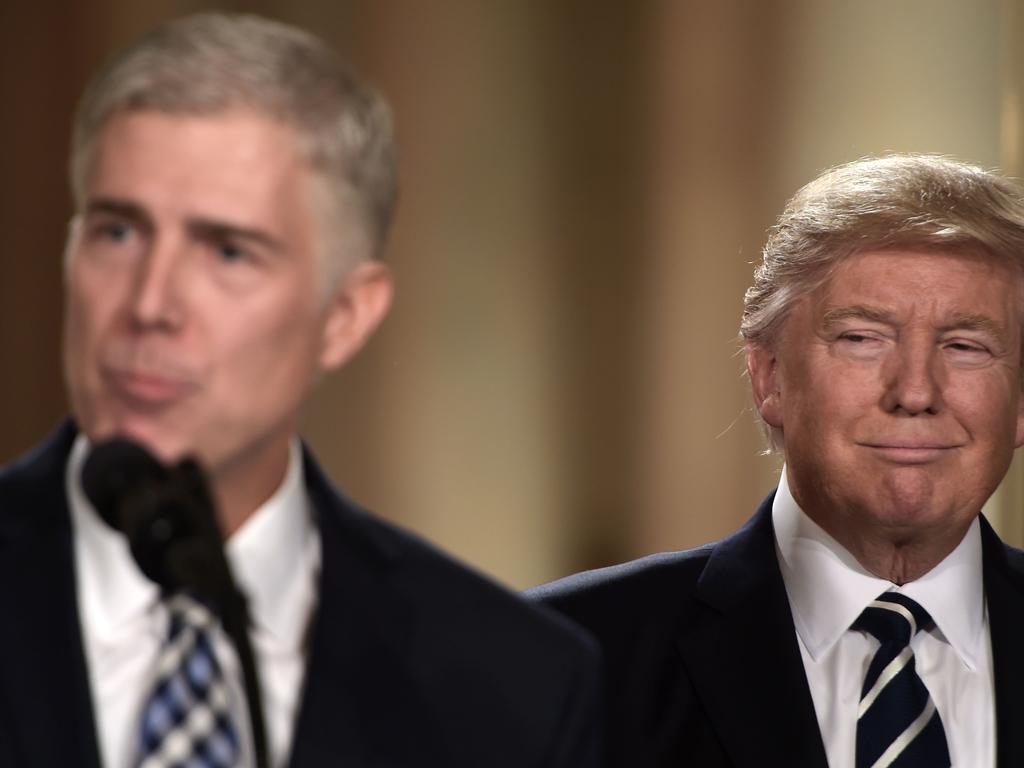Donald Trump’s Supreme Court will change America for decades
Whether or not he wins another four years next week, the ramifications of one of Donald Trump’s last acts as President will last for decades.
Of all the decisions President Donald Trump has made in his past four years in the top job, among the most significant and controversial are the appointments of what will soon be three justices to the US Supreme Court.
Whether Mr Trump’s time in office ends in November or he is re-elected for another four years, the men and women he has placed on the highest court in the land will be a legacy that will last for decades.
His third pick, conservative judge Amy Coney Barrett, is set to be confirmed by the Senate to replace the late progressive icon Ruth Bader Ginsburg today, just over one week before the country goes to the polls on November 3.
The decisions of the Supreme Court impact the lives of all Americans. The court is intended as one of the checks and balances in the American Constitution, with the judiciary ensuring that neither the executive (the President) or the legislature (Congress) wields too much power.
Some of the most significant issues facing the United States' population have been impacted by decisions of the US Supreme Court. In 1954, the case of Brown vs Board of Education of Topeka led to the desegregation of public schools.
In 1973, the case of Roe vs Wade confirmed that a woman's freedom to choose to have an abortion was protected by the US Constitution. The 1964 New York Times vs Sullivan case made it extremely difficult for public figures to sue for defamation, in a landmark ruling for free speech and press freedom.
As a result of the court's power and influence, the appointment of judges, which is in the hands of the president, is a very big deal.


SUPREME COURT JUSTICE: A JOB FOR LIFE
The Supreme Court is made up of nine judges including one who is the chief justice. A justice is appointed to the US Supreme Court for life or until they choose to retire.
They are appointed by the president, but their appointment must be confirmed by the Senate.
As a result of lifetime appointments, vacancies in the court do not arise often, and when they do, there is great interest in who the president appoints to fill the role.
Supreme Court appointments are viewed as a legacy of a president that continues long after they leave office.
Republican presidents are typically expected to appoint more conservative judges, and Democrat presidents are more likely to appoint liberal and progressive ones.
Voters on both sides of the aisle frequently cite Supreme Court appointments as among their top issues.
Prior to the 2016 election, a Pew Research poll found 77 per cent of conservative Republicans and 69 per cent of liberal Democrats said it was “very important” to their vote, while moderates in both parties tended to feel less strongly about the issue.
TRUMP'S SUPREME COURT APPOINTMENTS


Mr Trump has already appointed two Supreme Court justices, Neil Gorsuch and Brett Kavanaugh, with the imminent confirmation of judge Barrett set to bring the number of justices appointed by Republican presidents to six out of the total of nine in the current court. Both men are aged only in their 50s, while judge Barrett is just 48, meaning they are likely to hold their positions for a significant period of time.
At 87, Justice Ginsburg was the oldest Supreme Court justice when she died in September. The oldest now is Stephen Breyer, 82. Both were appointed by Bill Clinton, who was a Democratic president.
Justice Ginsburg had been previously diagnosed and treated for colon cancer and pancreatic cancer.
The next oldest is Clarence Thomas, 72 – who is widely viewed as the most conservative justice on the bench since the death of renowned jurist Antonin Scalia in 2016 – followed by Samuel Alito, 70. Both were appointees of George W. Bush, a Republican.
Given the age and health of some of the justices, it is possible that whoever wins the presidency in 2020 might be required to make new appointments during the next four-year term. Their decisions will affect the United States long after 2024.
CONTROVERSY OVER ELECTION-YEAR PICK
Following her death, Justice Ginsburg’s family revealed that her dying wish was that she not be replaced before the election.
“My most fervent wish is that I will not be replaced until a new president is installed,” she told her granddaughter days before she lost her battle with cancer, according to NPR.
Mr Trump’s nomination of judge Barrett to replace Justice Ginsburg drew outrage from Democrats, who accused Republicans of hypocrisy.
In 2016, Barack Obama nominated Merrick Garland to fill the seat of Justice Scalia, but the Republican-controlled Senate refused to hold a vote.
At the time, Republican Senate Majority Leader Mitch McConnell cited the unofficial “Biden Rule”, coined by then Senator Joe Biden in 1992, who argued that “once the political season is under way … action on a Supreme Court nomination must be put off until after the election campaign is over”.
Mr Biden, now the Democratic presidential nominee, at the time said that as long as the White House was held by one party and the Senate by the other, the voters should make the call. Mr McConnell said the Biden Rule did not apply in 2020, because Republicans controlled both the White House and the Senate.
Republican Senator Ted Cruz pointed out that during America’s history, there had been 29 occasions when a Supreme Court vacancy had arisen during an election year, and presidents had made nominations each of those 29 times. On 19 occasions, the president and the Senate were from the same party, with 17 of those nominees going through. For the 10 times when the Senate and the president were from different parties, the Senate confirmed the nominee only twice.



